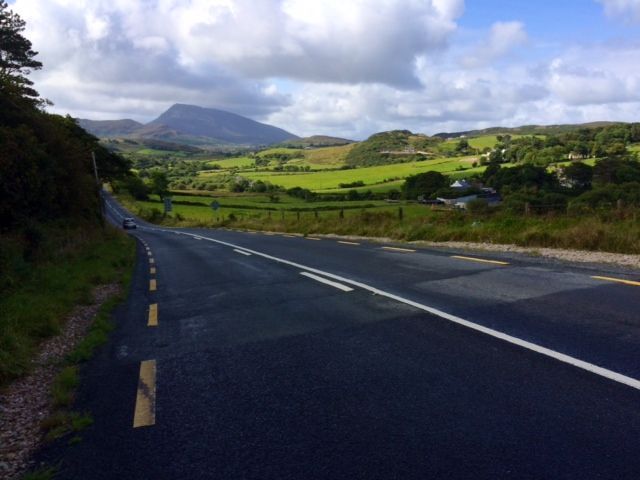Today’s journey took us from Falcarragh to Malin, covering a large swathe of north-west Donegal. Immediately after Falcarragh, the landscape became greener, and less wild. Muckish Mountain provided an impressive backdrop of the cycle to Ard Forest Park, the first stop of the day.
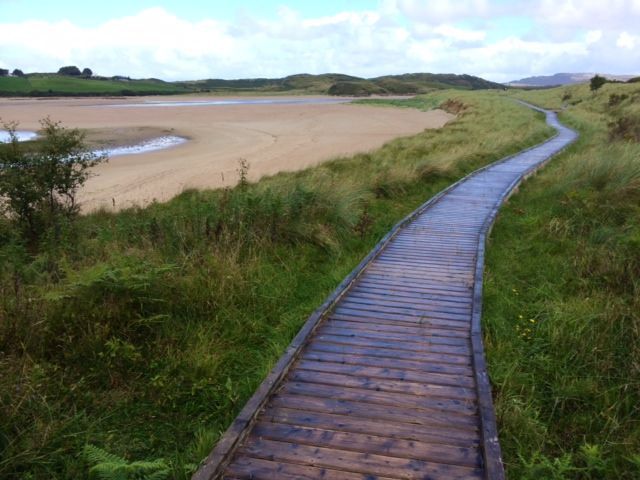
Ards Forest Park is a large 480 ha site managed principally for its recreational value. The Park backs onto a wide expanse of beach and has a series of looped walks through the woodland, the longest being 13km. This is a site that one could explore for a long time. It has some fantastic woodland habitat, in particular areas of old oak and wild wet woodland. Around the coastal fringe there is a nice dune system, salt marsh and both salt and freshwater lakes. When we visited, the weather was cool and windy, but in sheltered spots we saw large numbers of Sliver-washed Fritillary, a butterfly of deciduous woodland. If the weather had been better we would have spend longer exploring the wildlife delights of the area. Ards Forest Park is one of 10 Forest Parks that Coillte operate as part of its recreational role, and they really are worth visiting.
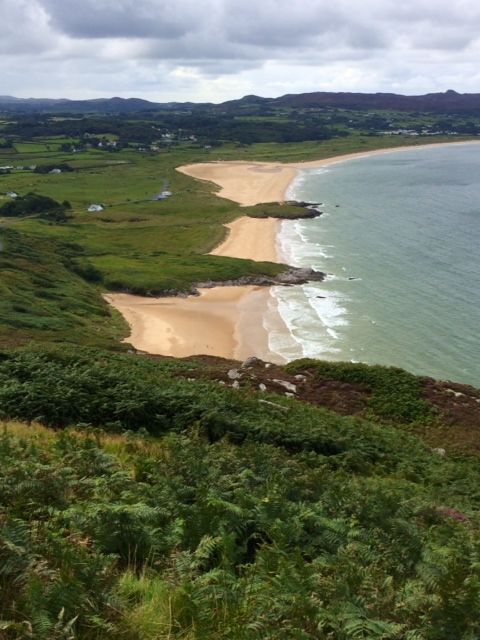
After Ards, the route took us around the convoluted coastline of Mulroy Bay, an extremely important bay in conservation terms. What makes this bay special is that it is a large shallow bay with a mixture of sheltered areas with weak currents, and other areas exposed to strong currents. And growing hear are reefs, made up of a kind of living red coral called Maerl which have adapted to both extremes of conditions. And just like the Great-Barrier Reef, the reefs here support a bewildering variety of specialised and rare marine life, including species found in few other locations in Ireland. Apparently, an underwater dive will reveal a myriad of sea urchins, sea cucumbers, bristlestars and countless varieties of molluscs and fish. It is the only Irish location for extensive beds of a small beautiful red-coloured saltwater clam called the Flame Shell and many other exotic species. But one needs a mask and snorkel to enjoy these sights, which I didn’t have.
I cycled the Fanad loop, a lovely picturesque part of Donegal, but didn’t go as far as the lighthouse. South of Portsalon stretches a beautiful long beach to Saldanha Head. The small road loops up around this headland, making for a difficult cycle, the toughest climd I’ve encountered since leaving County Kerry.
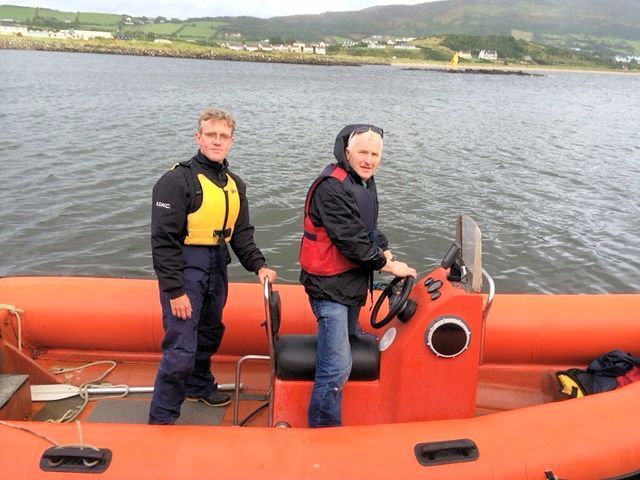
The car ferry from Rathmullen to Buncrana no longer operates, but Aengus Kennedy, a sailing instructor with a background in nature conservation and his colleague, Jack Gallagher, kindly offered to bring me across Lough Swilly on a rib. Delighted to have the shortcut, as it took at least 50 km off my journey. Bouncing across the fjord on the rib in choppy conditions gave me a good sense of the coastal environment in these areas, and the importance of the relatively sheltered bays for wildlife, boating, aquaculture and other marine activities. In winter, Lough Swilly is home to large number of migratory swans and geese that arrive from northern breeding grounds.
The last part of my journey for the day took me onto the large expanse of blanket bog on the high ground between Buncrana and Carndonagh. Couldn’t help but be struck by the large amount of peat being cut for fuel here, with plastic fertiliser bags full of peat stacked all along the road.
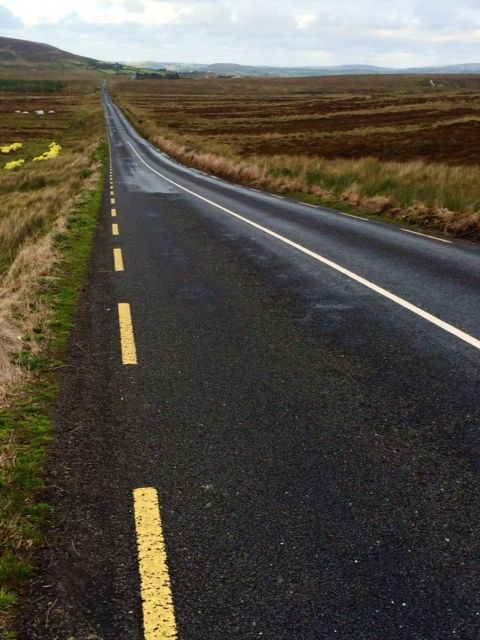
Was pleased to see the compact village of Malin where we stopped for the night. The long day’s journey had taken us over very varied landscape, with contrasting character. We sometimes lose sight of the fact of just how varied the Irish landscape is, and how quickly the character changes from one valley to the next.

